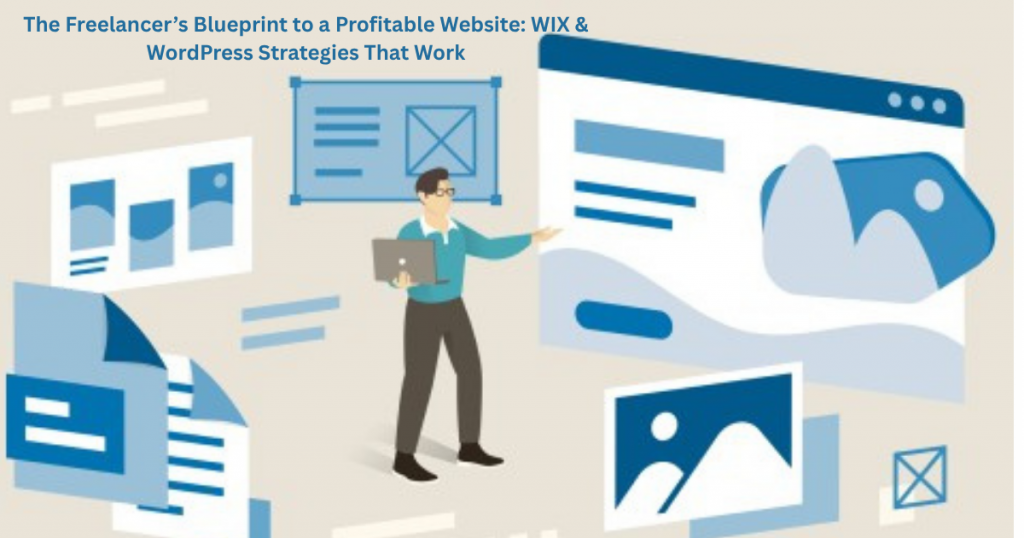
You’re a freelancer with skills to sell, but clients aren’t finding you. Social media posts get lost. Your inbox stays empty. Without a professional website, you’re invisible to most buyers. Every day without a website means missed opportunities. Potential clients Google your services – and find your competitors instead. You know you’re good at what you do, but without the right online presence, no one can tell. Wasted skills mean wasted income. This guide shows exactly how to build a website that works for you 24/7. Whether you choose simple WIX or powerful WordPress, you’ll learn:
- Which platform fits your business best
- How to create pages that win clients
- Simple tricks to look professional (no tech skills needed)
- Ways to make Google love your site
By the end, you’ll have a clear path to your own profitable website. Let’s turn your skills into visible, bookable services.
Why Your Freelance Business Needs a Website (And Why “Just Social Media” Isn’t Enough)
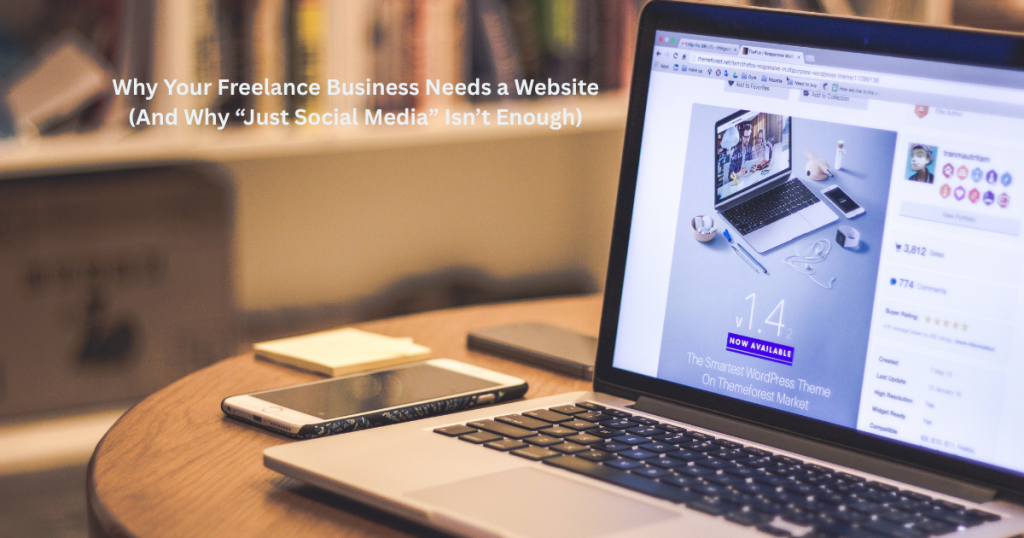
Social media is great for sharing your work, but it’s not enough to grow your freelance business. Platforms like Instagram or LinkedIn control your content—they can change rules or algorithms anytime, making it harder for clients to find you. A website is your own space online. It’s always open, works for you 24/7, and makes you look professional.
Without a website, clients might not take you seriously. Think about it—when someone needs a freelancer, they usually Google it. If you don’t have a website, they’ll find your competitors instead. A simple, clean site with your services, portfolio, and contact info builds trust. It shows you’re serious about your work.
Social media is like renting space—your website is owning it. You decide how it looks, what stays up, and how clients book you. Plus, a website helps you collect emails, showcase testimonials, and rank on Google. If you want more clients and higher-paying work, a website is the first step.
WIX vs. WordPress: Which One Fits Your Freelance Goals?
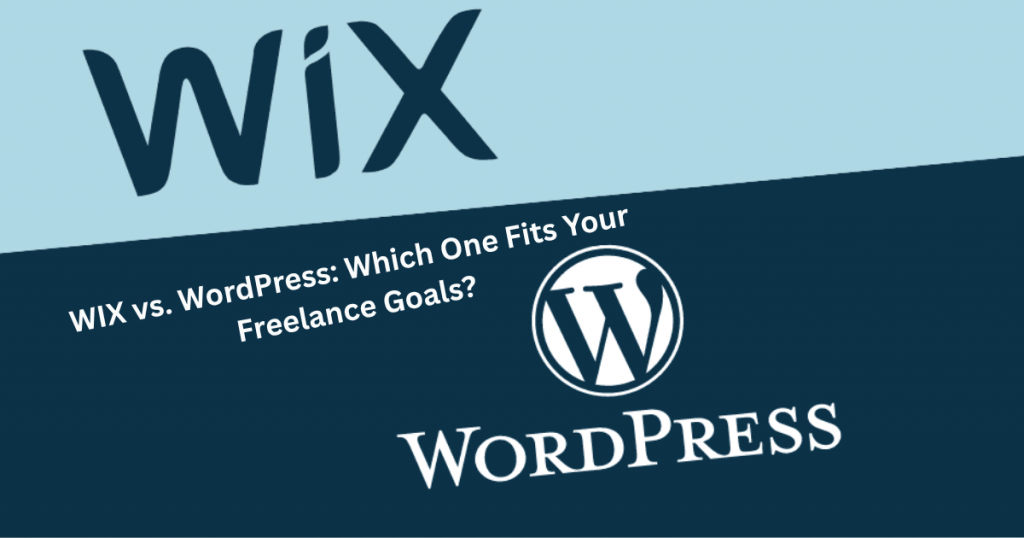
Picking the right platform for your freelance website matters. WIX is the easiest choice—just drag and drop, no tech skills needed. It’s perfect if you want a site fast without dealing with plugins or updates. But it has limits. You can’t change everything, and switching platforms later is tricky.
WordPress is more flexible and powerful. You own your site completely and can customize anything. It’s better for freelancers who want to grow, add online courses, or sell services directly. But it takes more time to learn. You’ll handle updates, security, and hosting yourself (or pay someone to do it).
Think about your goals. Need something simple now? WIX works. Planning to expand later? WordPress is worth the effort. Both can make great sites—it’s about what fits your time, budget, and skills.
Step-by-Step: How to Plan Your Website Before You Build

Before you start designing, take time to plan. First, list what your website needs. Most freelancers need a homepage, services page, about section, portfolio, and contact form. Keep it simple—too many pages can confuse visitors.
Next, think about your clients. What do they need to see to hire you? Put your best work upfront. Use clear headlines and short paragraphs. People skim websites, so make it easy for them to find what they need.
Finally, sketch a rough layout. Where should buttons go? How will clients contact you? Planning saves time later. A messy website turns clients away. A clean, organized one helps them say “yes” faster. Spend an hour planning now, and you’ll build a better site in less time.
Must-Have Pages Every Freelancer’s Website Should Include

Every freelancer’s website needs key pages to attract and convert clients. Start with a clear homepage that explains who you are and what you do in seconds. Include a professional photo and a strong headline like “I help [your ideal client] solve [their problem].” This makes visitors want to explore more.
Your services page is where clients decide to hire you. List what you offer in simple terms with prices if possible. Add a portfolio page to show your best work—before-and-after examples or case studies work great. Don’t forget an about page that tells your story in a friendly way. People hire freelancers they like and trust.
Finally, make contacting you easy with a dedicated contact page. Include a form, email, and even a calendar link for bookings. Testimonials from happy clients belong here too. These five pages (home, services, portfolio, about, and contact) cover everything potential clients need to see before hiring you.
Design Hacks to Make Your Site Look Professional (No Coding Needed!)
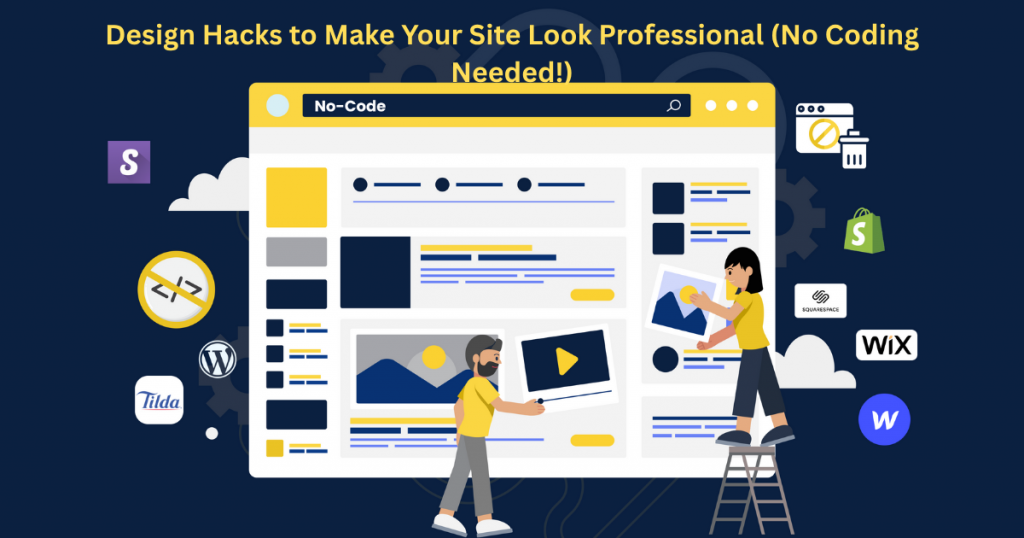
You don’t need to be a designer to create a pro-looking website. First, pick a clean template with plenty of white space. Crowded sites look messy and scare clients away. Stick to 2-3 colors max—one main color, one accent, and a neutral like white or gray. Too many colors feel chaotic.
Fonts matter more than you think. Use one easy-to-read font for paragraphs (like Arial or Open Sans) and one stylish font just for headlines. Keep text sizes consistent—18px or larger for normal text so it’s easy to read. Add high-quality images of your work, but avoid blurry phone pics. Free stock photos from sites like Unsplash work if you don’t have your own.
Small touches make a big difference. Add space between sections so the page breathes. Use the same style buttons everywhere (like rounded corners in your brand color). Align everything neatly—when text and images line up, your site instantly looks more professional. These simple tweaks take minutes but make clients take you seriously.
SEO Secrets to Get Found on Google (Even as a Beginner)
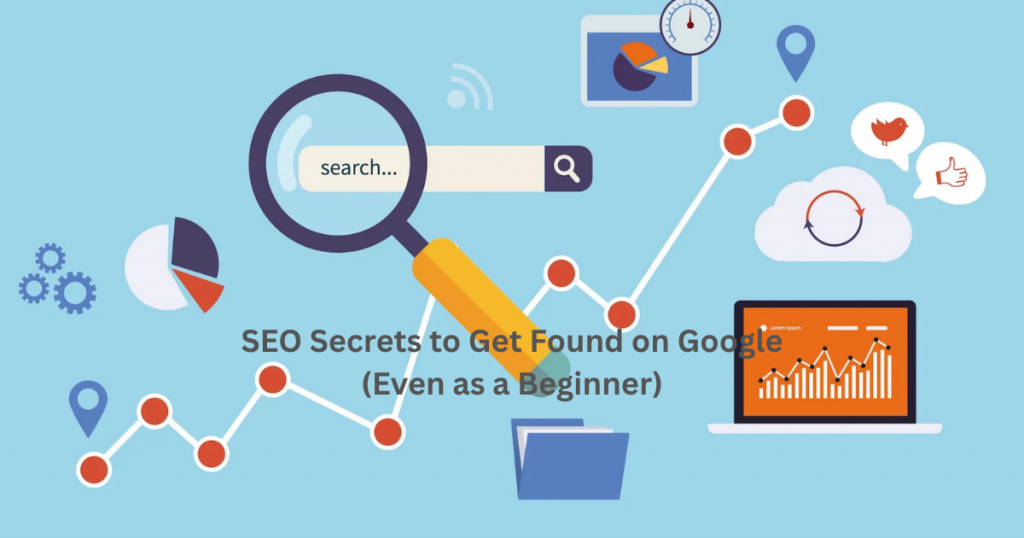
SEO sounds complicated, but you can start with basics that really work. First, use the words your clients search for. If you’re a “freelance graphic designer,” say that exact phrase on your homepage instead of just “I make logos.” Google matches these words to searches.
Every page needs a clear title (called an H1 tag) explaining what it’s about. Keep titles under 60 characters so they don’t get cut off in search results. Add short descriptions (meta descriptions) under 160 characters that make people want to click. Use your main keyword here too.
Google loves fresh, helpful content. Add a simple blog section where you answer client questions like “How much does a website cost?” or “What makes a good logo?” Update your site regularly—even small changes help. Install the free Yoast SEO plugin if you use WordPress—it gives easy tips to improve as you go. These simple steps put you ahead of most freelancers who ignore SEO completely.
How to Turn Visitors into Paying Clients with Simple Tweaks
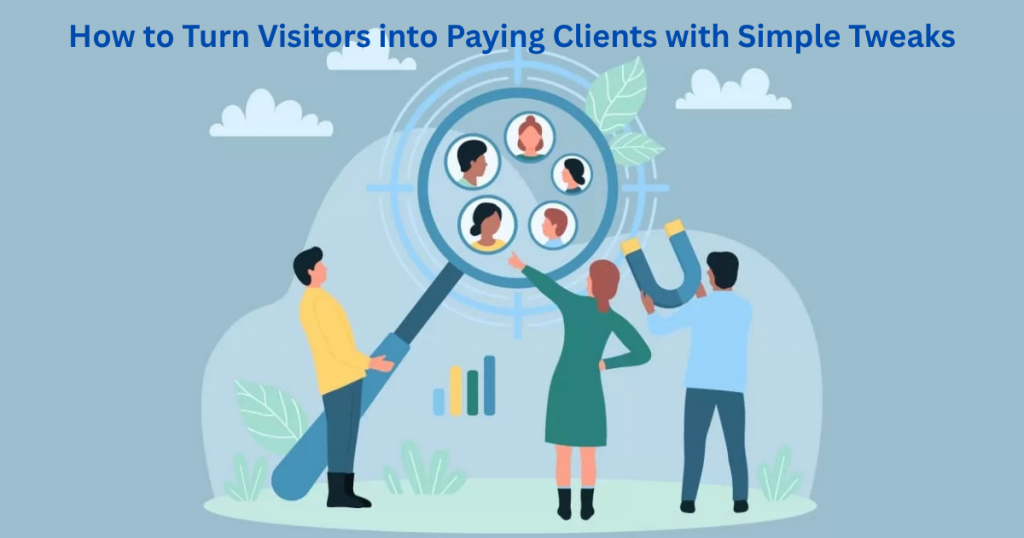
Getting visitors to your website is great, but turning them into paying clients is what matters. Start by making your call-to-action (CTA) impossible to miss. Use bright buttons with clear text like “Book Your Free Consultation” or “Get Your Quote Today.” Place these above the fold (visible without scrolling) on every page.
Next, remove any confusion about how to hire you. Add a simple “How It Works” section with 3 steps: 1) You contact me, 2) We discuss your project, 3) I deliver great work. Include a FAQ section answering common questions about pricing, timelines, and revisions. The easier you make it to say “yes,” the more clients you’ll get.
Finally, add trust signals throughout your site. Client testimonials with photos work best. If you’re new, offer a satisfaction guarantee or showcase credentials/certifications. A live chat feature or quick response time promise (like “I reply within 24 hours”) can also ease hesitant visitors into becoming paying clients.
The #1 Mistake Freelancers Make with Their Websites (And How to Fix It)
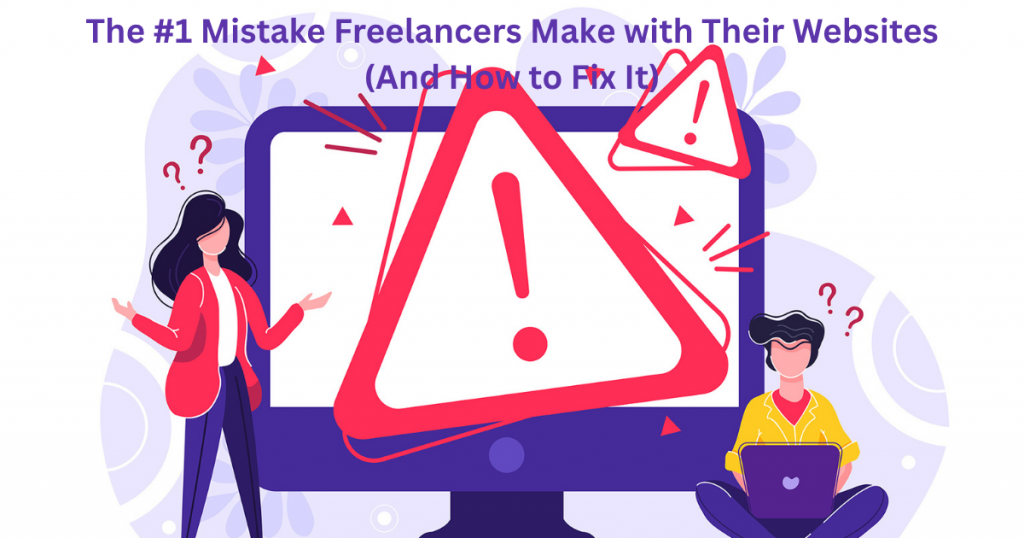
The biggest website mistake freelancers make? Being too vague. Saying you’re a “creative designer” or “skilled writer” doesn’t tell clients what you actually do. Visitors leave because they can’t quickly understand how you solve their specific problem.
The fix is simple: Get specific. Instead of “I design logos,” say “I create bold, memorable logos for eco-friendly brands.” Replace “I write great content” with “I craft website copy that turns visitors into buyers for law firms.” This specificity helps the right clients recognize you’re perfect for them.
Also, show don’t just tell. A graphic designer should display logo samples with client stories. A writer should share before/after examples of how their work improved a client’s sales. When visitors immediately “get” what you offer and see proof you deliver, they’re much more likely to hire you.
Keep Your Website Working for You: Easy Updates & Maintenance Tips
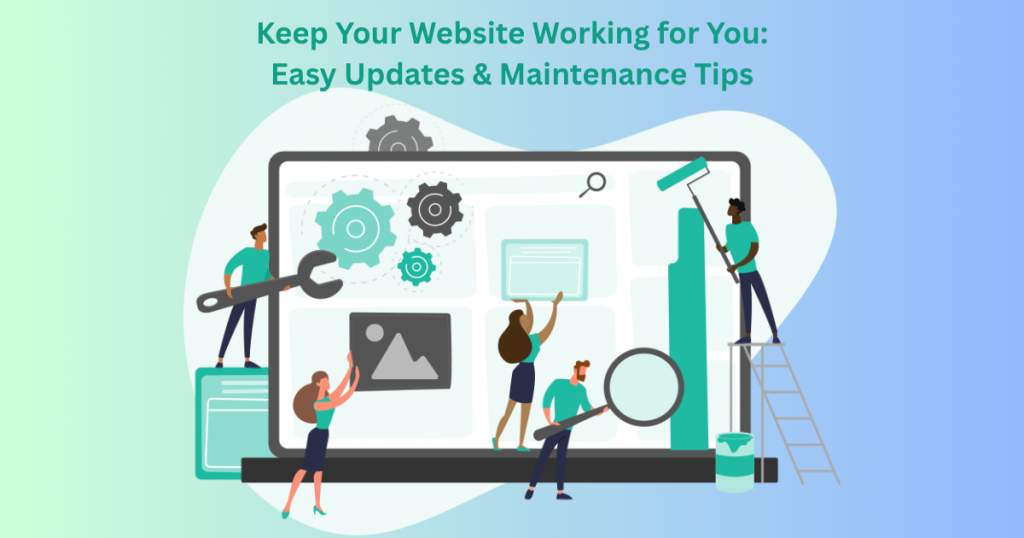
Your website isn’t a “set it and forget it” tool. Schedule 30 minutes each month for quick updates. Refresh your portfolio with recent work—clients want to see what you’re doing now, not projects from years ago. Update your testimonials too, as new positive reviews build more trust.
Check that everything still works properly. Click all your links to make sure they go to the right places. Test your contact form to confirm submissions reach you. These small checks prevent embarrassing “Sorry, my website was broken” client conversations.
Finally, keep your site secure. If using WordPress, update plugins and themes monthly. Back up your site regularly (many hosts do this automatically). Delete unused plugins that slow down your site. These simple habits keep your website fast, safe, and effective at bringing in clients all year long.
Final Thoughts
Now you have all the tools to create a website that works for your freelance business. These strategies aren’t complicated—they just need action. Start small if you need to, but start today. Every change you make brings you closer to more clients and better opportunities.
Your website is your best salesperson. It works while you sleep, shows off your skills, and turns visitors into paying clients. Don’t let fear or perfectionism stop you. Even a simple, well-structured site is better than no site at all.
If you get stuck or need help, I’m here. Email me at info@salahs-portfolio.co.uk, and I’ll point you in the right direction. Now go build the website your business deserves!
10 FAQs Based on This Blog
1. How much does it cost to build a freelance website?
You can start for free with WIX or WordPress.com. For more features, expect to pay $10-$20/month for hosting and a domain name.
2. Can I build a website with no tech experience?
Yes! WIX is beginner-friendly with drag-and-drop tools. WordPress has a learning curve but offers more control.
3. How long does it take to build a freelance website?
A basic site takes 1-2 days. A polished, detailed site might take a week if you work on it daily.
4. Do I really need a website if I have social media?
Yes. A website is your owned space—social media platforms can change rules or disappear anytime.
5. What’s the most important page on my freelance website?
Your services page. It tells clients exactly what you offer and how to hire you.
6. How often should I update my website?
Aim for small updates monthly (new portfolio work, testimonials) and a full review every 6 months.
7. Can I use templates or should I design from scratch?
Templates are perfect for freelancers. Customize colors and fonts to match your brand.
8. How do I get my website to show up on Google?
Use keywords (like “freelance graphic designer in London”), add alt text to images, and publish helpful content.
9. Should I include pricing on my website?
If your rates are fixed, yes. If they vary, say “Starting at £X” or offer a free quote button.
10. How do I make my website stand out from competitors?
Be specific about who you help and how. Show real client results (before/after examples work great).
Need more help? Email me at info@salahs-portfolio.co.uk!

I’m an organised and curious person with a passion for technology and investigative work, currently developing my skills through hands-on experience and IT studies. I enjoy solving problems, working with others, and learning something new every day.